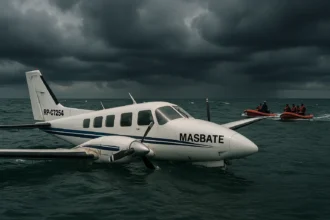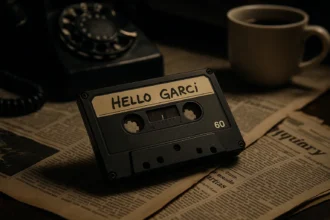On November 5, 1983, the Byford Dolphin oil rig became the site of one of the most horrifying tragedies in commercial diving history. What should have been a routine procedure turned catastrophic when a dive tender mistakenly removed a clamp too early. In an instant, five lives were lost—four divers and one tender—in an explosive decompression event that shocked the offshore oil industry and reshaped diving protocols worldwide.
🛠️ The Byford Dolphin: A Complex Machine
Built in 1974 in Norway, the Byford Dolphin was a semi-submersible oil rig that operated in the hostile waters of the North Sea. It was designed with saturation diving capabilities—essential for maintaining and repairing deep-sea infrastructure up to 6,100 meters below the surface.
In saturation diving, divers live and work under continuous high-pressure conditions inside a pressurized system. They shuttle between their underwater tasks and a surface habitat via a diving bell—all while remaining in a sealed, high-pressure environment. This method allows them to avoid multiple rounds of decompression and limits their exposure to “the bends,” a potentially fatal condition caused by rapid pressure changes.
📉 Why Saturation Diving Is So Dangerous
Deep-sea diving puts immense stress on the human body. As divers descend, nitrogen dissolves into their bloodstream. If they surface too quickly, the nitrogen forms bubbles that can block blood flow and damage tissues—a condition known as decompression sickness.
Saturation diving circumvents this by keeping divers under pressure for days or weeks. They only decompress once—at the end of the job. But this system is far from foolproof. Mechanical failure or human error can turn these pressurized systems into death traps.
🧩 The Fatal Chain of Events
At 3 a.m. on the day of the accident, two divers—Bergersen and Hellevik—had just completed an overlong inspection dive and returned to the rig in a pressurized diving bell. Two others, Coward and Lucas, were resting in the pressurized habitat.
After reentering the chamber, Hellevik began closing the hatch to the diving bell. Outside, a dive tender mistakenly believed the seal was complete and removed the clamp connecting the bell to the habitat.
The result was catastrophic. The pressure inside the system—nine atmospheres—instantly vented into the much lower-pressure environment outside. The diving bell was violently blown away, killing one tender instantly and injuring another. Inside the chamber, the three divers died on the spot as nitrogen exploded from their bloodstreams.
Hellevik suffered the most gruesome fate. As he tried to close the door, the decompression blast forced his body through a 60-centimeter gap in the hatch. The trauma was so severe, investigators likened it to an internal explosion. He died instantly.
🔍 Investigation and Fallout
Only one person survived the accident: dive tender Martin Saunders, who was severely injured but eventually recovered. The investigation found that fatigue, poor communication, outdated equipment, and lack of fail-safes contributed to the disaster.
The working environment was noisy, wet, and chaotic. Dive tenders relied on external speakers to hear when it was safe to disengage clamps. Safety features like interlock systems, pressure indicators, and visual door status lights were missing.
A damning detail: a year earlier, regulators had mandated safer clamp systems—but granted the Byford Dolphin an exemption.
⚖️ Legal and Industry Repercussions
Following the accident, families sued the Norwegian government, arguing it had failed to enforce safety regulations. In 2008—25 years later—a settlement was finally reached.
The accident led to sweeping reforms. Interlocking clamp systems became mandatory. Communication systems and safety gear were upgraded. Diving protocols were tightened. Since then, no other decompression accident has matched the scale of the Byford Dolphin disaster.
🧠 Lessons Learned: The Human Cost of Innovation
Saturation divers remain among the highest-paid professionals in the energy sector—often earning over $1,000 per day. Their job is still dangerous, but improvements in equipment and procedures have drastically reduced risk.
Yet, the industry is evolving. Remotely operated vehicles (ROVs) and robotic systems are beginning to replace human divers in many high-risk environments. But for now, human expertise remains irreplaceable in some tasks.
🧭 Legacy of the Byford Dolphin
The rig itself continued operations until 2019, when it was finally decommissioned and scrapped. But its legacy lives on—as a case study in human error, industrial risk, and the price of overlooking safety in complex systems.
For those who work at the ocean’s edge, the Byford Dolphin is more than a tragedy. It’s a reminder: one mistake, one assumption, can have irreversible consequences.




